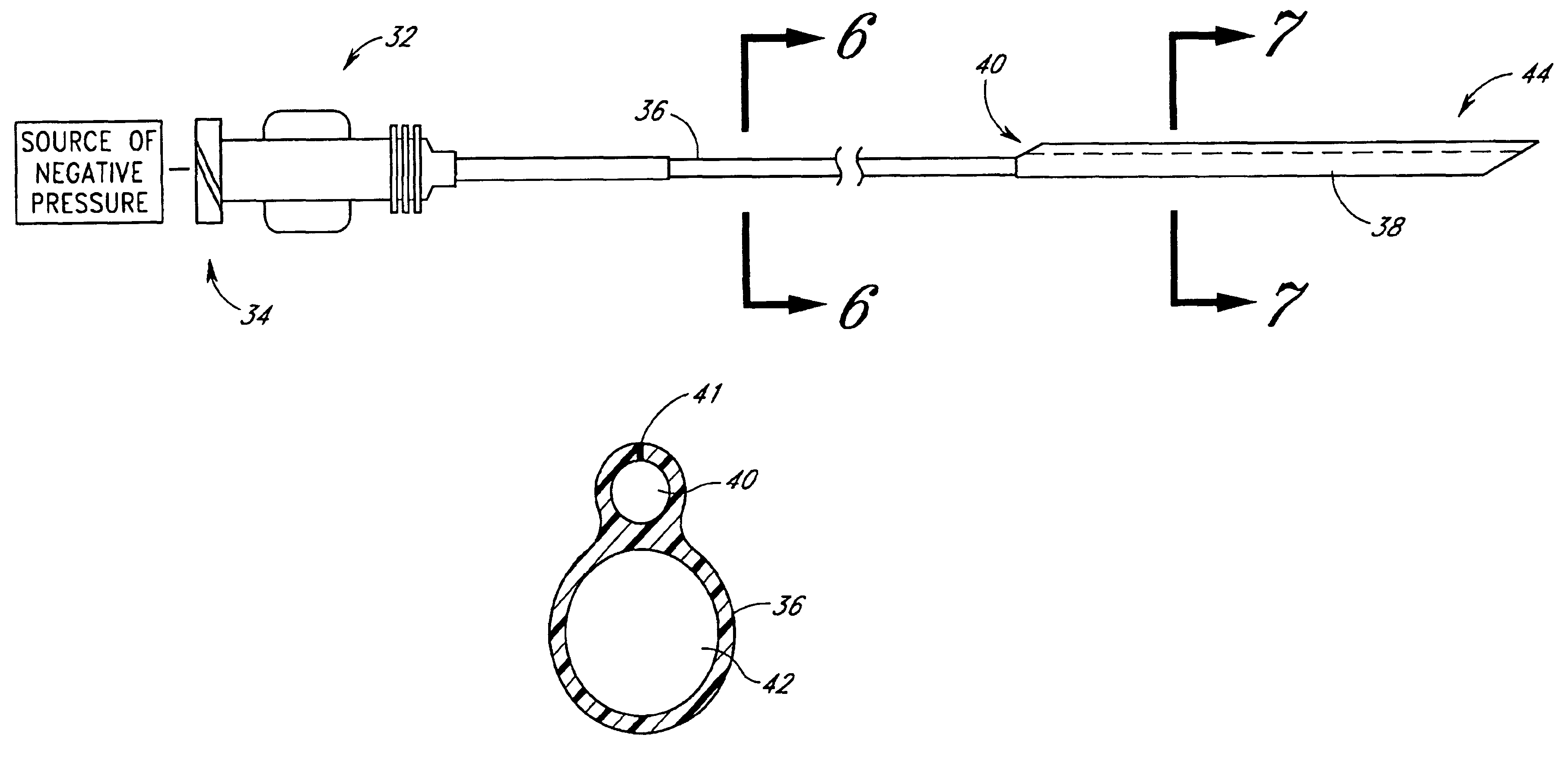Aspiration catheter
- Summary
- Abstract
- Description
- Claims
- Application Information
AI Technical Summary
Benefits of technology
Problems solved by technology
Method used
Image
Examples
Embodiment Construction
The present invention provides novel aspiration catheters for aspirating emboli, plaque, thrombi or other occlusions from a blood vessel and methods of using same. The present invention is adapted for use in the treatment and removal of an occlusion in a blood vessel in which the occlusion has a length and a width or thickness which at least partially occludes the vessel's lumen. Thus, the catheters of the present invention are effective in treating both partial and complete occlusions of the blood vessels. As used herein, “occlusion” includes both partial and complete occlusions, stenosis, emboli, thrombi, plaque and any other substance which at least partially occludes the vessel's lumen.
The method of the present invention can be used to provide aspiration with or without the need for a separate irrigation catheter and irrigation fluid. In the context of removing plaque, thrombi or other blockages from blood vessels. it has heretofore been proposed that an isolated “chamber” surro...
PUM
 Login to View More
Login to View More Abstract
Description
Claims
Application Information
 Login to View More
Login to View More - R&D
- Intellectual Property
- Life Sciences
- Materials
- Tech Scout
- Unparalleled Data Quality
- Higher Quality Content
- 60% Fewer Hallucinations
Browse by: Latest US Patents, China's latest patents, Technical Efficacy Thesaurus, Application Domain, Technology Topic, Popular Technical Reports.
© 2025 PatSnap. All rights reserved.Legal|Privacy policy|Modern Slavery Act Transparency Statement|Sitemap|About US| Contact US: help@patsnap.com



